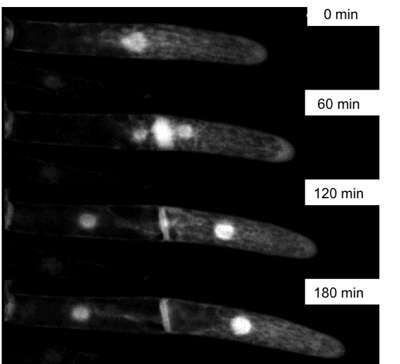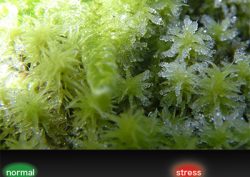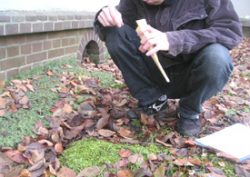Investigate control mechanisms of plant proliferation, differentiation, regeneration and totipotency

1. Examining plant cell polarity, the mechanisms of asymetric cell division, and the mechanisms of asymmetric distribution of proteins.
2. Examining the functions of a small G protein signaling factor that controls cell polarity, novel, cell polarity landmark factors and transcription factors that control cell polarity.
3. Studying the molecular mechanism by which the extracellular matrix of cell wall proteins, links to the internal cytoskeletons and controls the cell morphology and polarity and examining the roles of vacuoles in cell polarity and asymmetric cell division.
4. Finding the molecular mechanisms by which stress can disrupt cell polarity and cause switching between symmetric and asymmetric cell divisions.
5. Uncovering molecular mechanisms of cell proliferation and differentiation, based on visualization of cell cycle progression and functional analysis of plant-specific cell cycle regulators.
6. Revealing the relationships of chromatin structure, stem cell formation and cell differentiation.
7. Studying stem cell formation, and stem cell maintenance mechanisms, plant cell indeterminate growth, and mechanisms of totipotency.
Learn more about the research
In both plants and animals, development starts with a single fertilized egg, and the organism grows by creating stem cells, then forming various cell types by cell proliferation and differentiation. When you think about it, this is quite amazing.
Unequal, or asymmetric cell division, when the original cell gives birth to two daughter cells of a different nature, is fundamental to the development and evolution of multi-cellular organisms. However, this molecular mechanism is not yet well understood in plants. Moreover, genome analysis indicates that plants likely have unique mechanisms to control asymmetric cell division.
Elucidation of the mechanism of asymmetric distribution will provide important insights to help us understand the development of multi-cellular organisms. To identify factors affecting cell polarity and cell fate, we used the moss Physcomitrella patens as a model system to perform genetic screens for mutants affecting asymmetric cell division. Through these screens, we discovered proteins that show polar distribution during asymmetric cell division (see picture). We also found novel cell cycle control factors. We then used molecular genetics, molecular cell biology, genomics and various other techniques to perform functional analyses to examine the molecular network of cell division and cell fate determination in plants.
Totipotency is the potential to form stem cells after cell differentiation; the process of arresting and restarting cell cycle progression closely relates to the control of cell fate reprogramming. Our work also showed that several factors that control asymmetric cell division might also function in the control of totipotency. By understanding the molecular network regulating proliferation and differentiation of plant cells, we hope to shed light on why plant cells surpass animal cells in totipotency.
This area of research will make it possible to manipulate and optimize plant cell fate and can be expected to enable development of applications in a broad range of fields such as agriculture, life sciences, and even human medicine.

Department of Biological Sciences,
Faculty of Science, Hokkaido University









